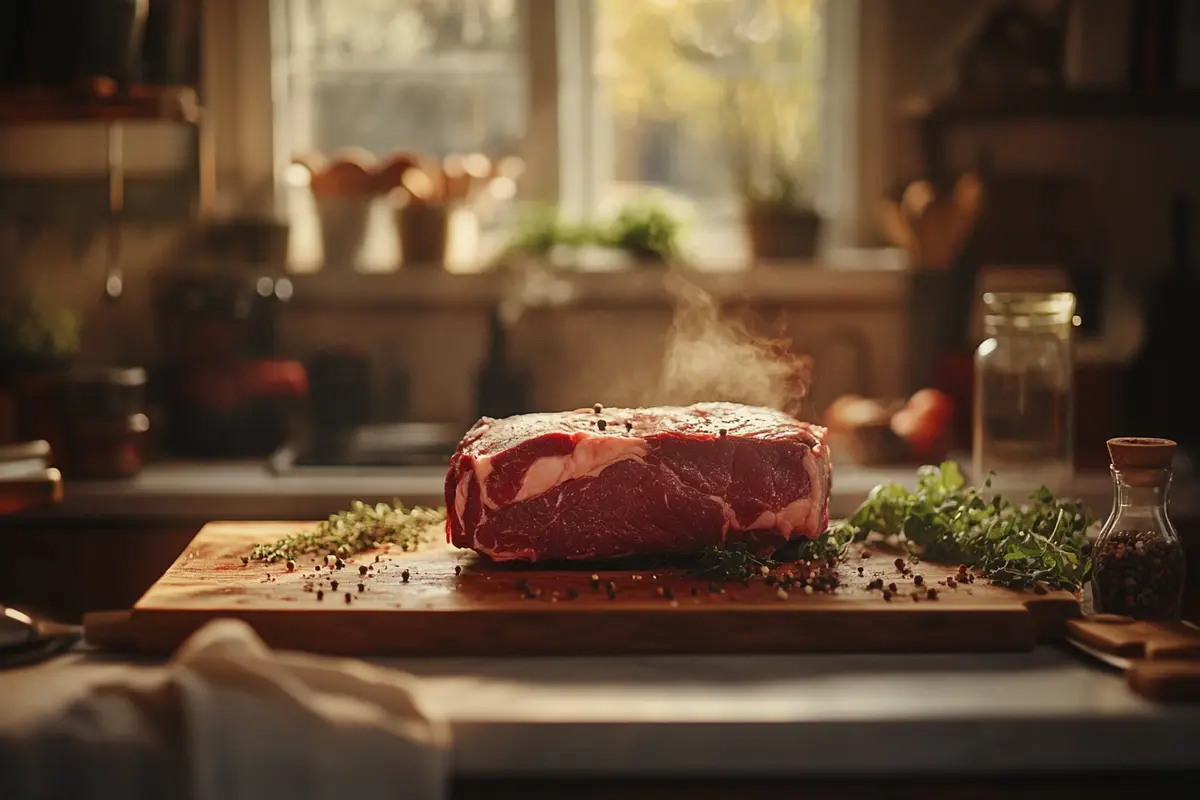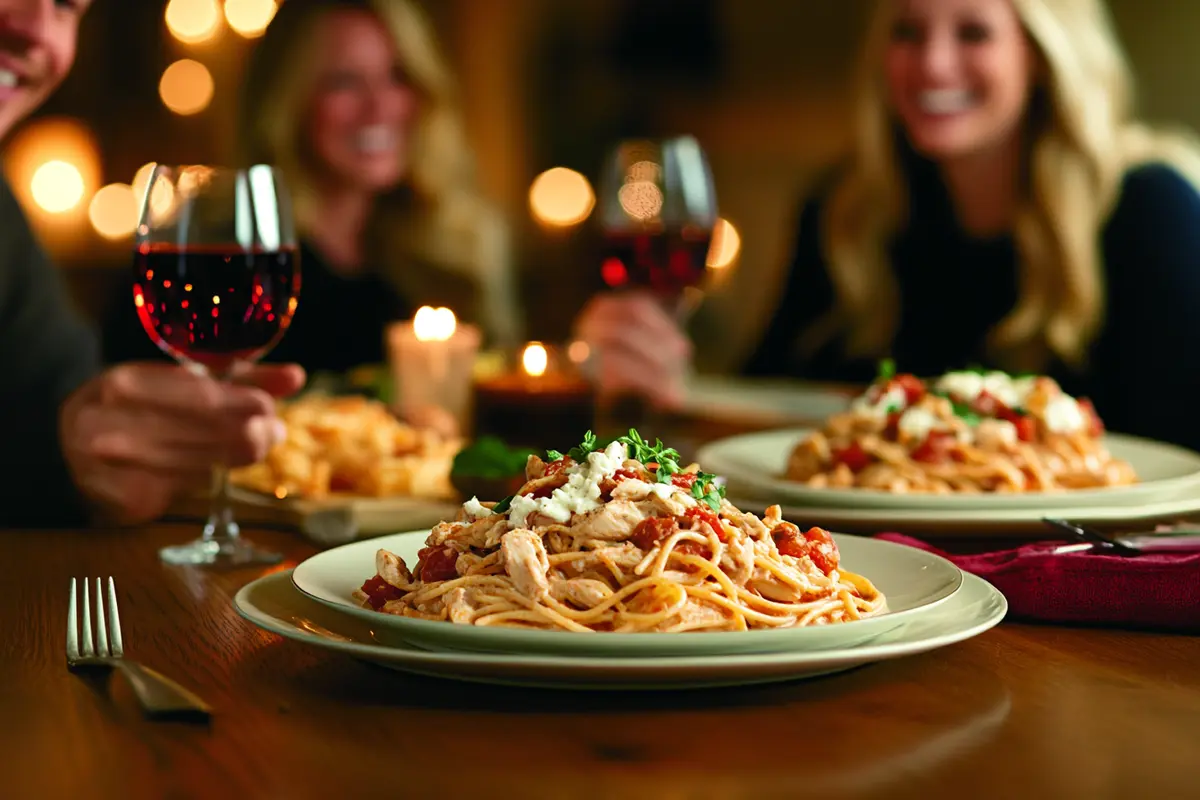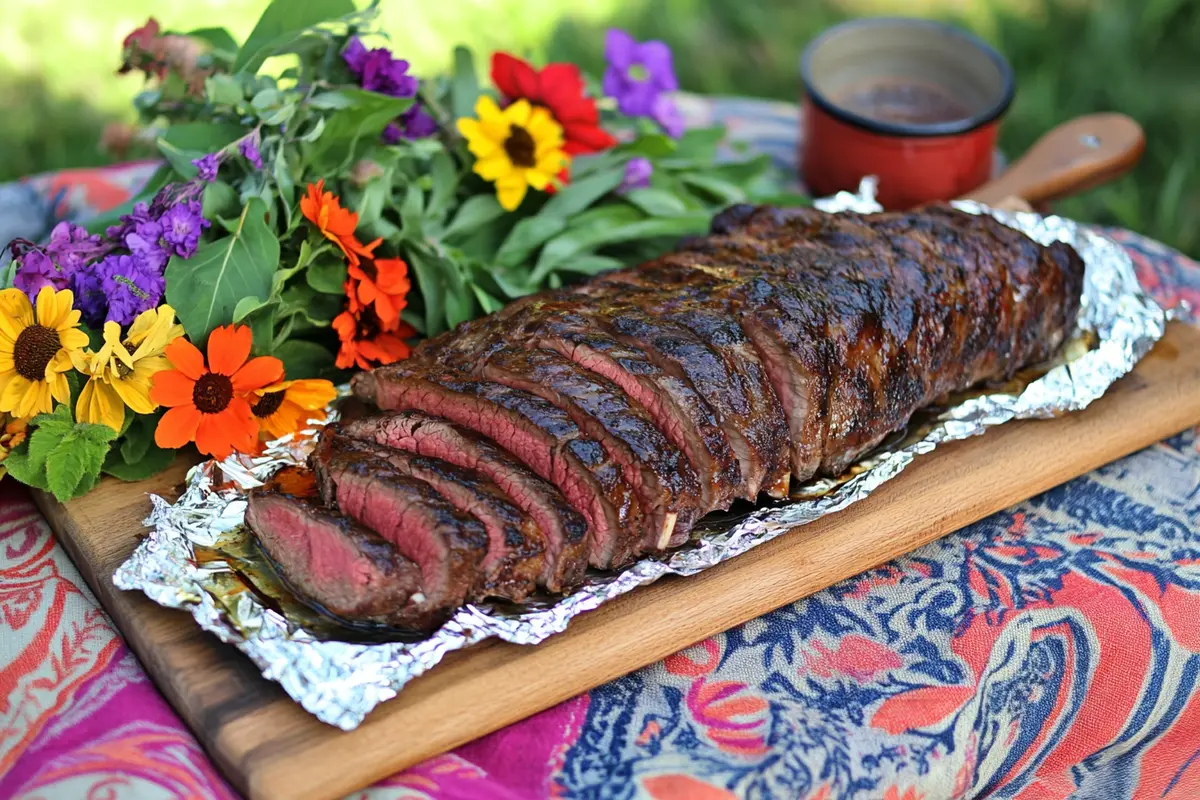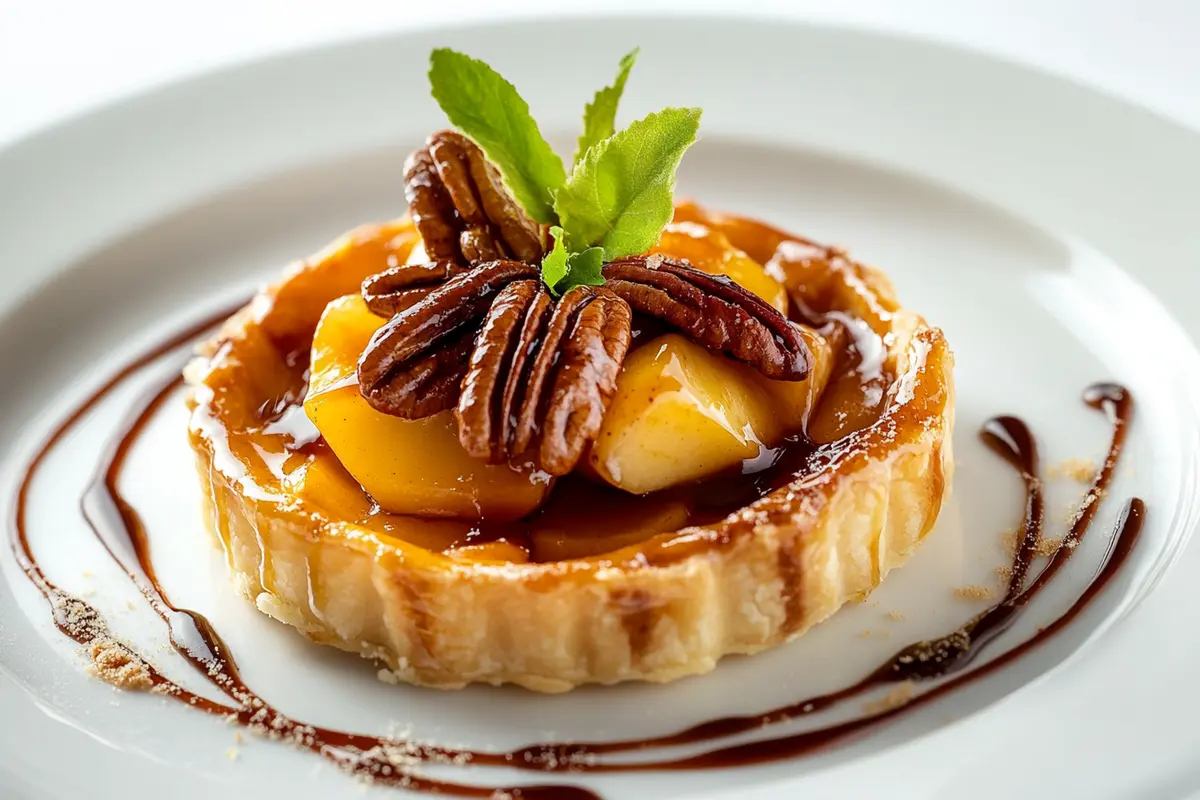1. Introduction
Welcome to this comprehensive guide on preparing an Incredible Ribeye Roast Recipe that will impress your family, wow your friends, and satisfy your own craving for a juicy, flavorful cut of beef. I’m excited to share all my tips and tricks with you in a friendly, conversational style—just as if we’re chatting in the kitchen together while we prep a delicious feast. Whether you’re a seasoned cook looking to refresh your skills or a novice home cook eager to master a show-stopping main course, you’ll find plenty of helpful insights here.
My goal is to provide a level of detail that surpasses any quick, run-of-the-mill recipe page. We’ll talk about the nuances of choosing the right ribeye roast, explore different seasoning methods, learn about temperature control, and discover all the little secrets that make each bite truly memorable. The ribeye roast is a versatile cut suitable for holidays, celebratory gatherings, or even a cozy weekend meal when you feel like treating yourself. I promise to give you all the insider knowledge you need.
So, why a ribeye roast instead of, say, a top sirloin or tenderloin? The ribeye is widely beloved for its marbling, which contributes to rich flavor, succulence, and tenderness. Properly handled, it delivers an unforgettable dining experience. By the end of this guide, you’ll have a Incredible Ribeye Roast Recipe ready to shine on your table. Let’s dive into the mouthwatering world of ribeye!
2. Understanding the Ribeye Roast
Before diving into cooking methods and seasoning strategies, let’s talk about the ribeye roast itself. This particular cut comes from the rib section of the cow, spanning ribs six through twelve. When we talk about a “ribeye,” we typically refer to the boneless center of this primal cut, which features strikingly beautiful marbling. If you’ve heard of “prime rib,” that term often refers to a standing rib roast. While “prime rib” can be used interchangeably, it can also denote a specific USDA grade. However, the star of our show here is a ribeye roast—a similar concept but typically without the bones (though bone-in options are also incredibly tasty).
One of the most distinctive features of ribeye is the flavorful pockets of fat marbling. These small streaks of fat melt during cooking, basting the roast from within and bringing out a luxurious flavor and mouthfeel. If you’ve ever had a dry piece of beef, you’ll appreciate how the moisture from ribeye’s marbling prevents such disappointment. Additionally, the muscle in this area doesn’t work too hard compared to other parts of the cow, resulting in a more tender cut.
Why does it matter to understand the cut? In a nutshell, knowing the background of your roast helps you appreciate the cooking techniques we’ll explore later. You’ll also learn why certain flavors pair so beautifully with ribeye. Moreover, you’ll see why a slow roast or a combination of high-heat searing and low-heat cooking can truly elevate the final dish. As we proceed, we’ll discuss how to pick a great ribeye roast from your butcher or grocery store so that you start with the best possible foundation for your Incredible Ribeye Roast Recipe.
3. Picking the Perfect Ribeye Roast

A well-executed ribeye roast doesn’t start in the oven; it starts at the butcher counter. If you’re lucky enough to have a local butcher you trust, don’t hesitate to rely on their expertise. Alternatively, many supermarkets now offer high-quality cuts, especially during holiday seasons. Regardless of where you shop, here are some tips to guide your selection:
- Marbling: Look for even flecks of white fat throughout the roast. That marbling ensures flavor and tenderness.
- Color: The beef should have a bright red color or a deep purplish-red hue (often called “bloom”). Avoid any grayish or brownish tints, which may indicate that the meat has been sitting out for too long.
- Fat Cap: Some ribeye roasts come with a thicker external fat layer or “fat cap.” This can add flavor, but you might trim it slightly at home if it’s excessive.
- Bone-In vs. Boneless: A bone-in cut can offer additional flavor and keep the roast exceptionally moist. However, a boneless cut is easier to slice. If this is your first time making a large roast, you might find a boneless version simpler to manage.
- USDA Grades: In the United States, USDA grades—Select, Choice, and Prime—reflect the quality of the meat. Prime is at the top tier in terms of marbling and flavor, but Choice can still provide great results, often at a more affordable price.
When you’re picking your roast, keep in mind the number of people you intend to feed. Generally, you can plan for about one pound of bone-in roast per person or three-quarters of a pound for a boneless roast. It may sound like a lot, but remember some weight accounts for the bone, and you’ll likely have a bit of shrinkage during cooking. Plus, who doesn’t love leftover ribeye roast for sandwiches?
4. Importance of Seasoning and Flavor Infusion
Now, let’s shift gears and delve into the fun part—flavor! Seasoning is where your personal touch really comes in. Although ribeye is already richly flavored, a skillful blend of spices or herbs can amplify that natural goodness and make your Incredible Ribeye Roast Recipe stand out from the crowd.
Basic Seasoning Approach:
- Salt: This is non-negotiable. Salt not only enhances flavor but also helps break down some of the muscle proteins, creating a succulent texture. Kosher salt or sea salt works best.
- Pepper: Freshly cracked black pepper imparts a lovely hint of spice. Some home cooks also add white pepper for complexity.
- Garlic and Onion Powders: These powders can blend seamlessly with the roast, offering an aromatic base. If you prefer fresh garlic, you can crush or mince it and rub it all over the meat before searing.
Advanced Flavor Additions:
- Fresh Herbs: Rosemary, thyme, and oregano are classics, bringing an earthy fragrance that pairs perfectly with ribeye’s robust taste. Chop them and gently press them onto the surface of the roast.
- Dry Rubs: Create your own dry rub with spices like paprika (for a hint of smokiness), chili powder (for a kick), or mustard powder (for tanginess). Dry rubs form a delicious crust when exposed to direct heat.
- Marinade vs. Dry Brine: If you have extra time, consider marinating your ribeye roast overnight in a mixture of oil, vinegar, and your favorite herbs. Alternatively, a dry brine (rubbing with salt and leaving it uncovered in the fridge) helps intensify flavor and promotes a crisp exterior.
Every roast is a bit different, and every palate is, too. Don’t be afraid to experiment. If you’re unsure, start with a time-tested blend of salt, pepper, garlic, and rosemary. You’ll be amazed at how those straightforward flavors can deliver an Incredible Ribeye Roast Recipe result without overwhelming the natural taste of the beef.
5. Preparing Your Roast: Steps Before the Oven
Now that you’ve selected your roast and decided on a seasoning profile, let’s go through what you should do before you pop that hunk of mouthwatering beef into the oven. Preparation is everything, and a few thoughtful steps can dramatically impact the final product.
- Bring It to Room Temperature: Take your ribeye roast out of the fridge at least 30 to 60 minutes before cooking. Allowing it to come to room temperature ensures more even cooking throughout.
- Pat It Dry: Use paper towels to gently blot any excess moisture from the roast. A drier surface will give you a better sear.
- Apply Seasonings or Rub: Generously coat the entire roast with your chosen rub or seasoning. Don’t forget the underside and the sides.
- Tie It Up (If Necessary): If your roast is partially boned or a bit loose, your butcher might have already trussed it with cooking twine. If not, tying it up helps the roast hold a uniform shape, leading to a more consistent cook.
- Consider Searing on the Stovetop: Many home cooks swear by a quick stovetop sear for color and flavor. You can use a large cast-iron skillet and a high smoke-point oil (like avocado or canola). Once the pan is very hot, sear each side of the roast for about 2–3 minutes. This step is optional, especially if you’ll use a high-heat blast in the oven, but it’s an effective way to lock in juices.
As you can see, there’s a bit of a dance here. Timing, temperature, and technique all come together to form your ultimate Incredible Ribeye Roast Recipe. These small prep actions can be the difference between a decent roast and one that sparks conversation for weeks.
6. The Detailed Incredible Ribeye Roast Recipe
Ready for a clear, step-by-step guide? Below is a concise recipe that incorporates many of the tips we’ve already discussed.
Yield
- Servings: 8–10 (for a 5-pound roast)
Timing
- Prep Time: 20 minutes (plus 30–60 minutes to bring the roast to room temperature)
- Cook Time: Approximately 1¾ to 2¼ hours (depending on doneness)
- Resting Time: 15–20 minutes
Ingredients
- 1 (5-pound) boneless ribeye roast
- 2 tablespoons kosher salt (or sea salt)
- 1 tablespoon freshly cracked black pepper
- 2 teaspoons garlic powder (or 4 cloves fresh garlic, minced)
- 2 teaspoons onion powder
- 2 tablespoons olive oil (or another high-heat oil)
- 1 tablespoon chopped fresh rosemary (optional, but highly recommended)
- 1 tablespoon chopped fresh thyme (optional, but highly recommended)
Note: Feel free to adjust the herbs and spices to your liking. For example, add paprika for smoky depth, or a pinch of chili powder for a little heat.
Equipment
- Roasting pan (preferably with a rack)
- Meat thermometer (instant-read digital is ideal)
- Aluminum foil for resting
Instructions
- Bring to Room Temperature
- Remove the roast from the refrigerator 30–60 minutes before cooking. This ensures more even cooking.
- Preheat the Oven
- Preheat your oven to 450°F (232°C).
- Pat Dry and Season
- Pat the roast dry with paper towels.
- In a small bowl, mix the salt, pepper, garlic powder, and onion powder (plus fresh herbs if using).
- Rub the olive oil over the entire surface of the roast, then apply the seasoning mixture. Be generous and make sure to coat all sides.
- Optional Stovetop Sear
- For an extra-crispy crust, heat a tablespoon of oil in a large cast-iron skillet over high heat.
- When the oil is shimmering, sear each side of the roast for 2–3 minutes until nicely browned.
- Start Roasting at High Heat
- Place the roast on a rack in a roasting pan (fat-side up if there’s a noticeable fat cap).
- Roast at 450°F (232°C) for 15–20 minutes to develop a beautifully browned crust.
- Lower the Temperature
- Reduce the oven temperature to 325°F (163°C).
- Continue roasting for approximately 1¼ to 1¾ hours more, depending on your desired internal temperature.
- Check Doneness with a Thermometer
- Insert an instant-read thermometer into the center of the roast (avoiding bone if it’s bone-in).
- Use these temperature guidelines:
- Rare: 120–125°F (49–52°C)
- Medium-Rare: 130–135°F (54–57°C)
- Medium: 140–145°F (60–63°C)
- Medium-Well: 150–155°F (66–68°C)
- Remove the roast from the oven a few degrees shy of your target temperature, as the internal temperature will rise during resting.
- Rest the Roast
- Transfer the roast to a cutting board and tent loosely with foil.
- Let it rest for 15–20 minutes. This allows the juices to redistribute, ensuring a moist and tender bite.
- Carve and Serve
- Slice the roast against the grain. For bone-in cuts, simply cut between the bones.
- Serve with your choice of sides (see Section 8 for pairing ideas) and enjoy your delicious, juicy ribeye roast!
7. Cooking Methods: Oven Roasting for Succulence
Oven roasting is the classic method for larger cuts like ribeye roast, offering a blend of convenience and consistency. While you can cook your roast using sous vide or even grilling methods, we’ll concentrate on oven roasting—an approach that’s both tried-and-true and flexible. Below is a breakdown of the key phases:
1. High-Heat Sear: If you’re not searing on the stovetop, you can achieve a similar result by starting at a very high oven temperature. Set your oven to around 450°F (232°C) and let the roast cook uncovered for about 15–20 minutes. This initial blast of heat caramelizes the surface.
2. Reduce the Temperature: After the high-heat stage, reduce your oven temperature to around 325°F (163°C). This slower roasting phase lets the internal portion of the meat cook more gradually, preserving tenderness and juiciness.
3. Use a Thermometer: A reliable instant-read meat thermometer is your best friend here. Aim for these internal temperature targets (remove your roast from the oven a few degrees shy of these to allow for carryover cooking during resting):
- Rare: 120–125°F (49–52°C)
- Medium-Rare: 130–135°F (54–57°C)
- Medium: 140–145°F (60–63°C)
- Medium-Well: 150–155°F (66–68°C)
- Well-Done: 160°F (71°C) and above
4. Resting Period: No matter how eager you are to slice and serve, plan on letting your roast rest for 15–20 minutes. Tent it loosely with foil, and don’t worry if it continues to cook slightly—this resting period is crucial for reabsorbing juices.
Taking the time to roast your ribeye carefully ensures a satisfying interior color and texture. You’ll have that great, savory crust on the outside and a tender, pinkish (or however you prefer) interior that almost melts in your mouth. This synergy between the outer sear and the inner juiciness is precisely what makes a good roast become an Incredible Ribeye Roast Recipe.
8. Checking Doneness: The All-Important Thermometer
I’d like to emphasize the importance of a meat thermometer once more. It’s amazing how much guesswork goes away when you use one. You won’t be cutting into your roast prematurely to check color or relying on inaccurate cooking times that assume uniform shapes and oven calibrations. Plus, a thermometer is a relatively inexpensive investment that you’ll use again and again for other meats, poultry, and even some baked goods.
Using a thermometer is straightforward:
- Insert the probe into the thickest part of the roast, ensuring it’s not touching the bone (if bone-in) and is as close to the center as possible.
- Wait a few seconds for the readout to stabilize.
- Aim for your desired internal temperature (as discussed in the previous section).
Avoid Overcooking: Ribeye roasts can go from perfect to slightly overdone in just a matter of minutes, especially as you get past medium doneness. Keep a close eye when the roast is approaching your target temperature. It can help to remove the roast from the oven when it’s a few degrees under the goal temperature. During the resting period, the internal heat continues to rise, typically by about 5°F, depending on the size of the roast.
Color Cheat Sheet: If you do find yourself without a thermometer, you can still use the color of the juices or the internal appearance as a rough guide. However, keep in mind that the only way to be absolutely sure—and the best way to consistently achieve your Incredible Ribeye Roast Recipe perfection—is to rely on that thermometer.
9. Serving and Pairing Recommendations
Once your roast is cooked and rested, it’s time for the fun part: presenting it to your eagerly waiting dinner companions and digging in. You’ve likely worked hard on your marinade or rub, watched the internal temperature like a hawk, and patiently let the roast rest. Now, let’s complete the masterpiece with some well-chosen sides and garnishes.
1. Slicing Technique: Use a sharp carving knife to slice your roast against the grain. This preserves tenderness in each bite. If you opted for a bone-in roast, slice between the bones for an easy serving portion.
2. Sauces and Condiments: A rich au jus made from the pan drippings is a classic choice. Simply deglaze the roasting pan with beef stock or red wine, then simmer to reduce. For a tangy twist, consider a creamy horseradish sauce or even a simple Dijon mustard on the side.
3. Side Dishes:
- Roasted Vegetables: Carrots, parsnips, and potatoes can roast alongside your beef, soaking up the flavorful drippings.
- Mashed Potatoes or Cauliflower Mash: The rich, velvety texture complements the hearty roast.
- Green Salad: A crisp salad with a sharp vinaigrette cuts through the richness of the roast.
- Yorkshire Pudding: A British classic, perfect for sopping up gravy.
4. Wine Pairings: Ribeye’s richness pairs beautifully with full-bodied red wines like Cabernet Sauvignon, Malbec, or a bold Merlot. The tannins in these wines balance out the fattiness of the cut.
The beauty of a Incredible Ribeye Roast Recipe is that it holds up well against robust sides and sauces. Feel free to experiment, but don’t overpower the star of the show. After all, the highlight is that succulent beef bursting with flavor.
10. Troubleshooting Common Pitfalls
Even with careful preparation, sometimes things don’t go according to plan. Maybe you ended up with a roast that’s a bit drier than expected or found it tricky to manage timing. Don’t worry; we’ve all been there, and there are ways to salvage or prevent these issues next time around.
- Dry or Overcooked Meat: If your roast feels like it’s crossed the boundary from succulent to slightly tough, try slicing it thinner. Serving it with an au jus or gravy can also add moisture back. Next time, rely on your thermometer more closely and consider pulling the roast from the oven sooner.
- Underseasoned Exterior: If you don’t taste enough flavor in each bite, that’s typically a sign to use more salt (or let the salt penetrate longer before cooking). Another approach is to use a marinade or dry brine overnight.
- Uneven Cooking: Sometimes the outer edges might be cooked more than the center. This often happens if the roast is cold when it goes into the oven. Bringing the roast to room temperature helps mitigate this issue. Also, rotating the pan halfway through cooking can help.
- No Crust or Insufficient Browning: If your crust isn’t as browned or crispy as you’d like, try either a stovetop sear in a hot cast-iron skillet or an initial blast of higher heat in the oven. Patting the roast dry before cooking helps, too.
- Spice Burn: Some rubs with sugar or delicate herbs can burn under high heat. Keep an eye on the crust, and if it starts to char, loosely tent the roast with foil.
Remember, cooking is both a science and an art form. Each roast comes with its unique traits. The more you practice, the more you’ll learn the nuances of your oven, your preferred level of doneness, and the seasoning balance you enjoy most. Over time, you’ll become a virtuoso of the Incredible Ribeye Roast Recipe.
11. Storing and Repurposing Leftovers
Now that you’ve carved up your masterpiece and served it to a chorus of “oohs” and “aahs,” what should you do if you have leftovers? While it’s not always guaranteed that a beautiful ribeye roast will have any leftovers, sometimes you’re fortunate enough to have an extra slice or two—or maybe you planned intentionally for leftover goodness. Proper storage and creative repurposing can let you relive those flavors all over again.
- Storage: Seal your leftover slices in an airtight container or wrap them tightly with plastic wrap or aluminum foil. Store them in the refrigerator within two hours of cooking. They should remain fresh for about 3–4 days.
- Reheating: Gently reheat slices in a low-temperature oven (around 300°F or 150°C) with a splash of beef stock or water to avoid drying them out. Alternatively, you can reheat in a microwave on lower power, but keep an eye on it to prevent rubbery texture.
- Cold Sandwiches: Thinly sliced leftover ribeye roast transforms into a scrumptious steak sandwich. Add caramelized onions, a smear of horseradish sauce, and fresh arugula or lettuce for a satisfying lunch.
- Stir-Fries and Wraps: Cut leftover roast into bite-sized strips and toss them into a quick stir-fry with vegetables. Or roll them up in a tortilla with fresh salsa and cheese.
- Breakfast Hash: Dice the meat and sauté with potatoes, onions, and peppers for a hearty morning hash topped with a fried egg.
Leftovers offer a second opportunity to enjoy the flavors you worked so hard to create. In some households, next-day ribeye roast sandwiches are almost as exciting as the main event. Whatever you decide, handle your leftovers with the same care you used to create that Incredible Ribeye Roast Recipe in the first place.
12. Carving Out an Experience

Believe me, the joys of a perfectly cooked ribeye roast extend well beyond the meal itself. Preparing a feast is often about the entire experience—shopping for quality ingredients, lovingly seasoning your roast with a personal touch, and patiently waiting for that timer to ping. It’s the conversations you share in the kitchen, the laughter around the table, and the satisfied sighs of delight as everyone savors each mouthful.
In today’s fast-paced world, taking the time to slow down and craft something special can be immensely rewarding. Cooking a ribeye roast is like orchestrating a mini culinary symphony. You’re the conductor, the roast is your main instrument, and the seasonings and side dishes are the supporting harmonies. When all these elements come together, the results are truly magical.
If this is your first ribeye roast endeavor, don’t fret about perfection. Embrace the learning curve. If you’re a seasoned pro, I hope you discovered a new tip or two to add to your arsenal. Either way, the moment you slice into that roast and watch the juices flow, you’ll know the journey was worth it. After all, that’s exactly how you elevate a simple recipe into an Incredible Ribeye Roast Recipe that people won’t stop talking about.
13. Frequently Asked Questions (Optional Bonus Heading)
While we could wrap up now, I want to answer a few extra frequently asked questions. These might come up as you plan your next ribeye adventure:
- Can I marinate a ribeye roast overnight?
Absolutely. A marinade can infuse unique flavors. Just make sure to pat the roast dry before roasting. - Should I baste my roast while cooking?
Generally, the fat from the ribeye roast provides enough self-basting. You can baste with pan juices if you prefer, but it’s not mandatory. - Is a reverse sear method better than the traditional approach?
Some people prefer reverse searing (low and slow cooking first, then a high-heat finish). Either method can be excellent, so choose what fits your schedule and comfort level. - What if my roast looks done on the outside but raw on the inside?
Lower your oven temperature and extend cooking time. Also, consider whether your roast was at room temperature before you started. - Can I freeze leftovers?
Yes, you can freeze cooked ribeye roast for up to 2–3 months. Wrap it carefully to prevent freezer burn.
14. Conclusion
I hope this deep dive into creating an Incredible Ribeye Roast Recipe has equipped you with both confidence and inspiration. From understanding the anatomy of the roast to mastering the art of seasoning and temperature control, there are many moving parts to consider. Yet, with thoughtful preparation and a bit of patience, a ribeye roast can become a true centerpiece for your family dinner, holiday feast, or special celebration.
Cooking is about more than simply following steps—it’s a personal journey where you tune into flavors, textures, and aromas. Adjust the seasonings to your taste, pay attention to how your oven behaves, and don’t forget to enjoy the process. When you finally slice into that roast and catch that first whiff of savory, perfectly cooked beef, every moment of preparation will feel worthwhile.
Feel free to revisit sections of this guide whenever you need a refresher. Experiment with different rubs, try a variety of side dishes, and, most importantly, have fun! If you approach this dish with enthusiasm, care, and a dash of culinary curiosity, your finished meal will be nothing short of extraordinary. With that said, it’s time for you to take your newfound knowledge and set forth on your own Incredible Ribeye Roast Recipe adventure. Happy cooking!
For an in-depth guide on prime beef selection, visit Beef. It’s What’s For Dinner.
This trusted resource covers everything from choosing cuts to understanding marbling benefits.
For more recipes: Lunch Archives – freshfixrecipes.com




